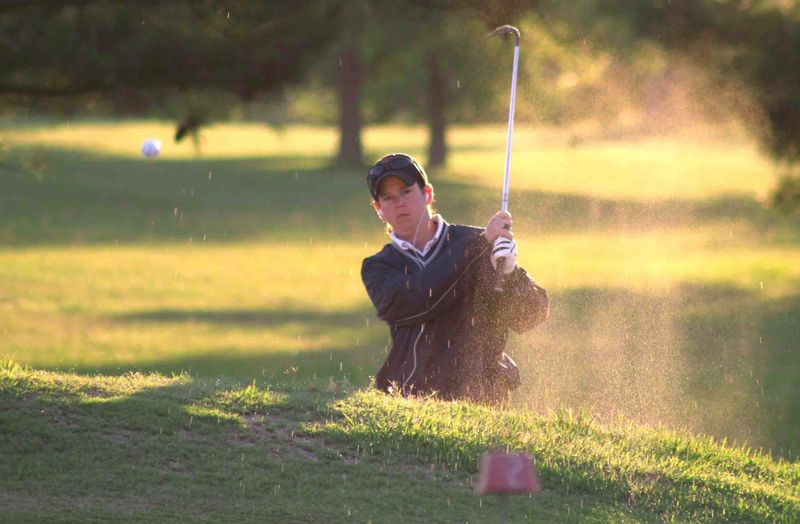Professional Golf: Daylight vs. Primetime Broadcasting
Introduction
The recent criticism by U.S. Open co-leader Wyndham Clark regarding the late broadcast window of Saturday’s third round has sparked a debate about the priorities of professional golf. Clark’s dissatisfaction with playing in suboptimal conditions due to poor visibility at sunset raises important questions about the balance between television ratings and the players’ experience. This incident prompts us to examine the decision-making process behind prime time broadcasting and its consequences for players, spectators, and the integrity of the game.
The Decision-Making Process
Television Networks and Ratings
It is essential to understand the motivations of networks like NBC in scheduling golf events. With the tremendous financial investment they make in broadcasting rights, networks aim to attract maximum viewership. By airing the U.S. Open in prime time on the East Coast, they increase the likelihood of higher ratings in a more lucrative market. Thus, the decision to extend the broadcast window into the late evening serves the interests of both the network and potential advertisers.
Player Experience and Fairness
While networks prioritize ratings, it is important not to neglect the impact on the players. As evidenced by Wyndham Clark’s comments, playing in dim light during crucial moments of the tournament can greatly affect a player’s performance. The lack of clear visibility can lead to misjudged shots, increased difficulty in reading greens, and potentially unfair playing conditions for those rounds played in the dark.
The Philosophical Debate
The Essence of Golf
At the heart of this debate lies a question about the essence of golf. Is it primarily a spectator sport or a game of skill and integrity? While attracting a large audience is undoubtedly important for the growth and commercial viability of professional golf, it should not overshadow the player’s experience or the integrity of the game itself. Golf is a sport with a rich history and tradition, and it is essential to consider how changes, such as late broadcast windows, can impact the time-honored values of the game.
Player Preparedness and Adaptability
On the other hand, proponents of the late broadcast window argue that it adds an additional layer of challenge to the game. Playing in suboptimal conditions requires players to adapt, showcasing their ability to tackle adverse circumstances and still perform at the highest level. Furthermore, these conditions may evoke nostalgic feelings for some players, harking back to their formative years on the golf course.
An Editorial Perspective
As a commentator, it is important to provide an editorial perspective on this matter. While it is understandable that networks prioritize ratings, it is crucial to strike a balance that respects both the players and the traditions of the game. Golf should be played under conditions that allow for optimal performance and uphold its fundamental principles of fair play.
Considerations for Broadcast Scheduling
To address this issue, one potential solution could be a compromise between traditional daylight play and primetime broadcasting. Networks should consider adjusting the tee times for the final rounds, allowing for a meaningful prime time slot without compromising the players’ experience. This could involve starting the rounds earlier or adjusting the tournament timetable to accommodate the television window.
Enhancing Player Experience
Another crucial aspect is improving the playing conditions during the late rounds. Organizers should ensure adequate lighting systems are in place to maintain visibility for players and spectators alike. Advanced technology, such as LED floodlights, could be implemented to create an optimal playing environment, even after sunset.
Conclusion
The clash between prime time broadcasting and daylight play in professional golf raises questions about priorities and the impact on players. While networks seek to maximize viewership and revenue, it is crucial to strike a balance that respects the traditions and integrity of the game. By finding a compromise between primetime broadcasting and player experience, golf can continue to evolve while preserving its most valued principles. Ultimately, the stakeholders of the sport should prioritize a fair and enjoyable experience for both players and spectators.

<< photo by Allan Nygren >>
The image is for illustrative purposes only and does not depict the actual situation.
You might want to read !
- “To the Green and Beyond: Fowler and Clark Tied for the Lead at the U.S. Open”
- Champion’s Journey: Analyzing the Official Scorecards of UFC Fight Night: Vettori vs Cannonier
- Father’s Day 2023: Honouring Aussie Dads – Exploring the Date, History, Significance, and Exciting Ways to Celebrate
- “Record-Breaking Rivals: Fowler and Schauffele Dominate US Open, Australians Impress”
- “Miracle Escape and Rory’s Red-Hot Performance Write New Chapter in US Open History”
- “The American Dream Prevails: Incredible Comeback Defines Unbelievable US Open Pandemonium”




